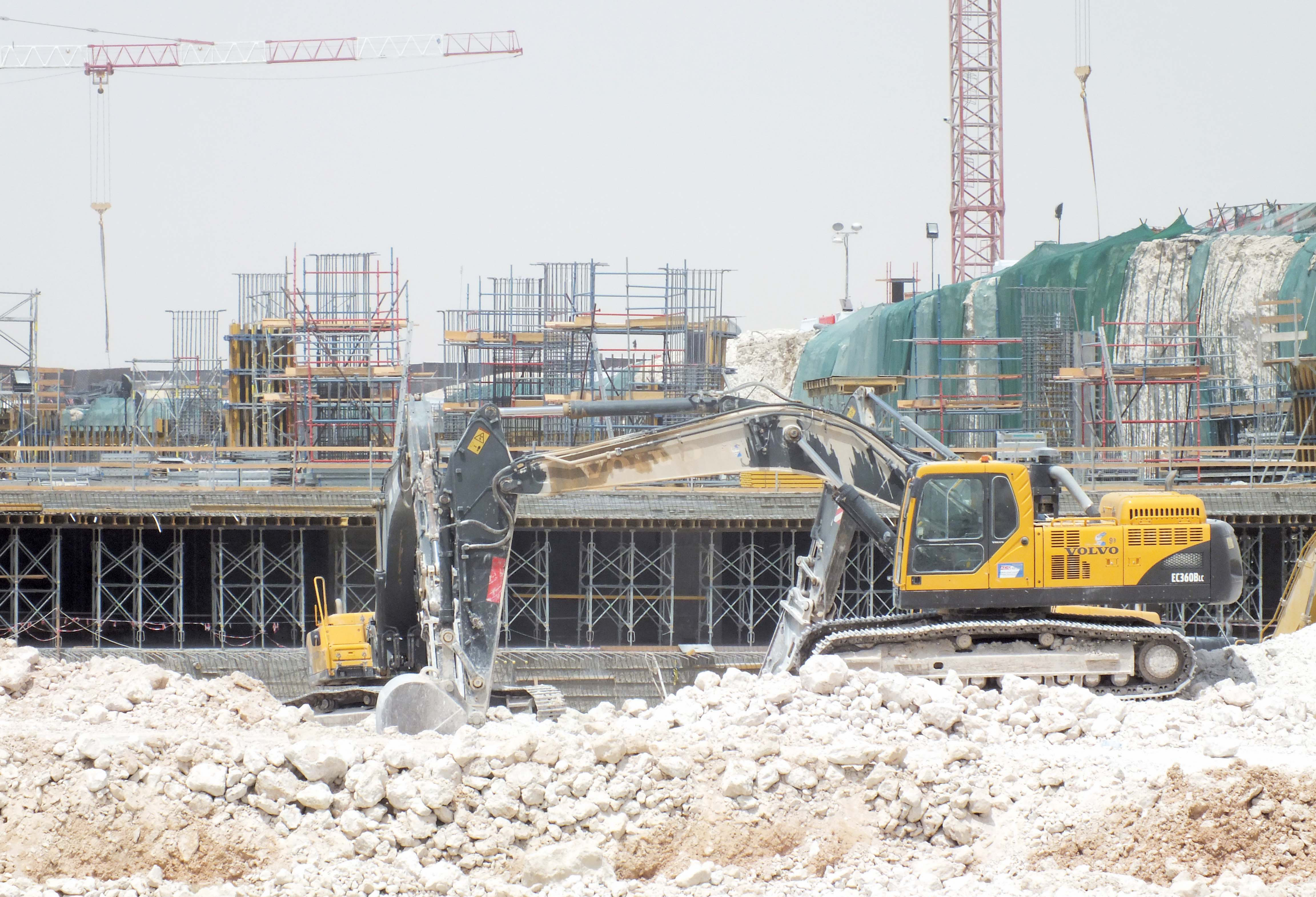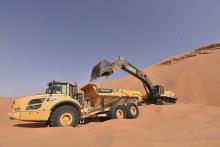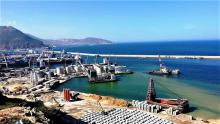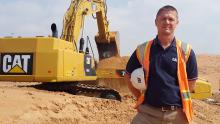
Compiling a report on the aggregates industry in the Middle East is not easy because defining the countries that make up the region vary. However, in many company reports and trend analyses the region is coupled with Africa because Africa and the Middle East overlap. For example, Egypt or Libya are African countries but they speak the Arabic language and share the Middle Eastern culture.
Almost everyone would agree that the following countries are part of the Middle East: Bahrain, Egypt, Iran, Iraq, Israel, Jordan, Kuwait, Lebanon, Oman, The Palestinian Territories, Qatar, Saudi Arabia, Syria, United Arab Emirates and Yemen.
Many experts also include the other countries of North Africa, Libya, Tunisia, Algeria and Morocco, because they are also Arabic-speaking and their history and culture are tied to those of the other countries of the Middle East. Also, most experts in the region would include Turkey, often referred to as a bridge between the Middle East and Europe.
During the next two years the Africa/Mideast region is expected to undergo significant growth in the consumption of construction aggregates, stimulated by infrastructure development projects and strong growth in general economic activity.
Indeed, through to 2017 worldwide sales of construction aggregates are forecast to expand 5.8%/year to 53.2 billion tonnes.
Following recent declines from 2007-2012, aggregates demand is expected to rebound in North America and Western Europe. Eastern Europe is also expected to register faster growth.
“The global market will continue to be driven by above average growth in the large Asia/Pacific and Africa/Mideast regions,” says Freedonia analyst Gleb Mytko.
The non-building market for construction aggregates is expected to outperform the building segment through 2017, as many countries will invest heavily in their public infrastructures.
For example, members of the Gulf Cooperation Council (GCC), Bahrain, Kuwait, Oman, Qatar, Saudi Arabia and the United Arab Emirates GCC nations, in particular, have earmarked large sums of money for the development of a 2,200km rail network to connect national and regional locations, and crushed stone is expected to account for over one-half of all new product demand generated between 2012-2017.
These aggregates trends are presented in World Construction Aggregates, a new study from The
“Gains will be spurred by voracious demand for mined materials in China, India, and other developing nations as industrial output increases,” says Matt Raskind, Freedonia Group analyst.
“The greatest sales growth through 2017 will occur in the large Asia/Pacific region, fuelled by substantial investments in new mine production capacity in several nations.”
Strong gains will also be recorded in South America. The Africa/Mideast region will post the next fastest advances.”
Indeed, in the last 18 months, the Middle East’s largest aggregates producer,
From its quarry No. 2 in the Emirate of Ras Al Khaimah, the company produces more than 60 million tonnes/year of gabbro rock, concrete and asphalt aggregates, acquiring the adjoining Ras Al Khaimah Rock Company (RAK) in 2007 as part of its ongoing growth strategy. This is the largest limestone quarry in the Middle East.
Stevin Rock operates a huge fleet of mobile equipment and its own nine-berth all-weather harbour at Khor Khuwair allows it to export up to 70% of production throughout the Middle East and to the Indian steel industry.
The government-owned operation has some 250 pieces of mobile plant working in Quarry 2 including AED 170 million (US$46 million) of upgraded mobile plant that includes 20
A fleet of trucks feeds a range of production areas, using four Hewitt Robbins primary screens, a Lokomo K160 primary jaw crusher and two
And at the recent Cemtech Middle East & Africa 2014, the leading international cement conference and exhibition series held in Dubai in front of an audience of over 270 senior industry delegates from 35 countries, they were upbeat about prospects.
The guest of honour was His Excellency Sheikh Yaser Al Qasemi, general manager of Union Cement Company, Ras Al Khaimah, and chairman of the Cement Producers’ Association of the UAE.
Thomas Armstrong, conference organiser, provided an overview of the cement industry’s performance in the MEA region, noting North Africa’s resilience in the face of a challenging political and economic environment.
“Even in Egypt, where increased competition and skyrocketing energy costs have been compounded by a weakening market resulting from political unrest, demand has fallen only modestly, while other countries such as Algeria are performing well,” says Armstrong.
In his keynote speech, covering global cement markets, Yuri Serov of
Focussing on the Gulf countries, Hettish Karmani, Global Investment House (Kuwait), provided an upbeat view of the sector, which will benefit greatly over the coming five years from high levels of construction activity.
Projects will be driven by national development plans: the Qatar 2022 World Cup and Dubai World Expo 2020, amounting to a potential construction value of US$2.4 trillion earmarked for the coming years.
Regional GCC clinker and cement capacities are expected to reach 93 million tonnes/year and 123 million tonnes/year, respectively, in 2014, versus consumption of 92 million tonnes/year.
While Saudi Arabia will remain by far the largest market going forward, he expects Qatar to exhibit the highest growth rate, with demand expected to rise to an average of 7 million tonnes/year over the 2013-22.
The conference also had a range of presentations focussing on all areas of cement manufacturing technology, with contributions from Yanbu Cement (Saudi Arabia),
Major quarry companies, also represented in the Middle East/Africa, are also seeing improvements.
French group
Q4 EBITDA improved by 10% in the Middle East/Africa, and Lafarge’s figure show that the region contributed the largest amount of operating income with €297 million for the last four months of 2013 (compared to €295 million in the same period in 2012) while for the 2013 full year it was €1.15 billion, a gross fall of 7%, but equal to 2012 (€1.242 billion) on a like-for-like basis.
Lafarge is listed as having over 5,700 employees in the Middle East where it operates seven production sites and has over 50 ready mix concrete plants.
During the full year (January-December) 2013 the company sold 7.9 million tonnes of cement (8.4 million tonnes in 2012) 5.2% drop (like-for-like 4.4%); 2.2 million tonnes of aggregates (2.3 million tonnes in 2012) a 7% drop and 800,000m³ of ready mixed concrete in 2013 (1.1 million m³ in 2013), a 27.7% drop.
However, operating EBIDTA went up from CHF 279 million (€229 million) to CHF 283 million (€232 million).
For Q4 2013, cement sales increased to 2 million tonnes (1.9 million in the same period in 2012); aggregates sales stood at 500,000tonnes (same in 2012) and RMC improved from 279,000m³ to 283,000m³.
Also looking to boost production are companies in Turkey who say they plan to export more natural stones to China in 2014.
Indeed, the country’s natural stones’ export revenue increased by 17% from US$1.9 billion to $2.2 billion in 2013, when compared to 2012.
A total of $981.8 million of this amount was made to China, which represents an increase of 25% in comparison to 2012. Turkey sold marble and travertine worth $978.88 million to China.
Marble and travertine export revenue was up by 27% to $1.5 billion and trimmed marble, trimmed travertine, other trimmed natural stones (which can be used in construction), granite and other natural stones such as tiles and stone pieces export revenue was $761.504 million, $261.210 million, $24.447 million, $17.686 million and $14.273 million, respectively.
The country’s exports to the US were worth $298 million; to Iraq, $145 million; Saudi Arabia, $95 million and to Azerbaijan, $45.47 million.









